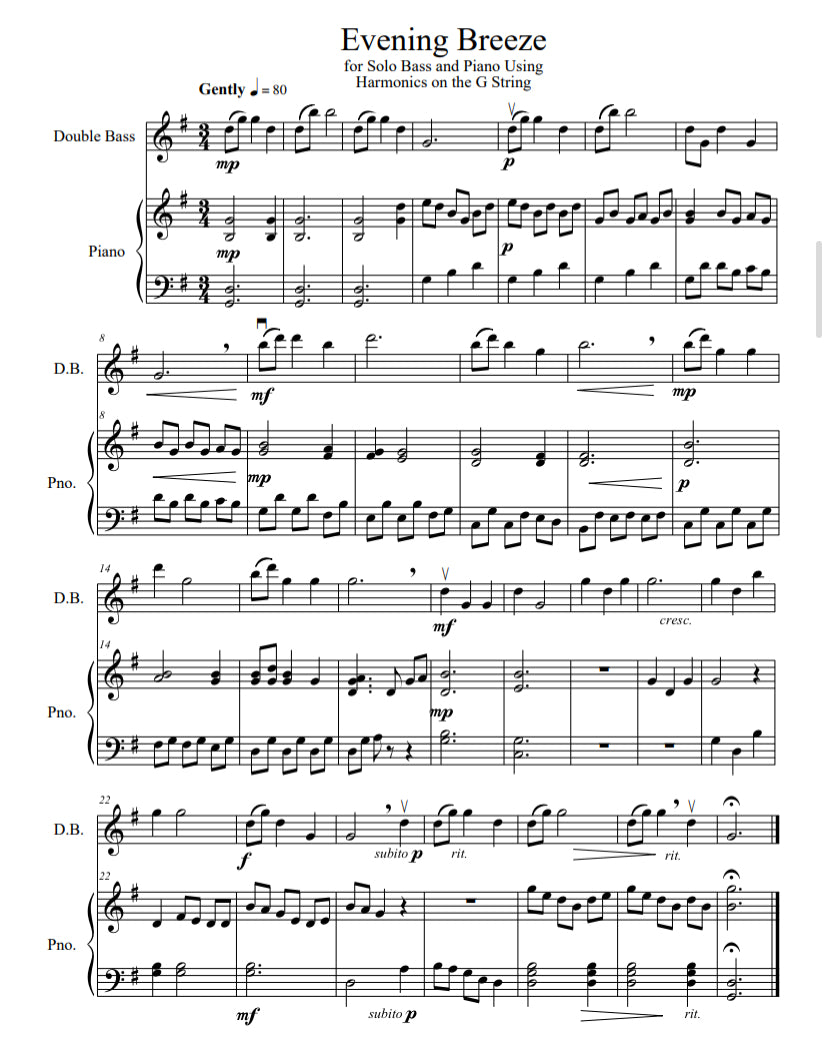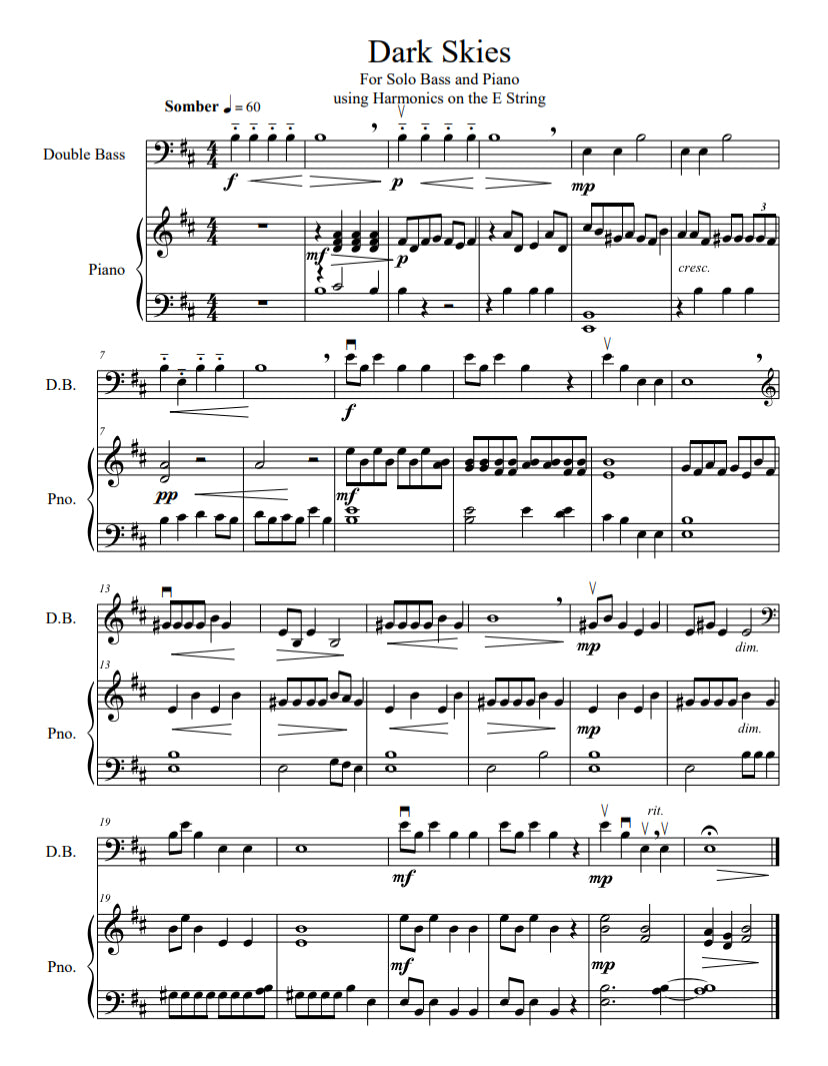Michael Montgomery
Michael Montgomery: Songs from the Ozarks for db & piano and double bass quartet
Michael Montgomery: Songs from the Ozarks for db & piano and double bass quartet
Couldn't load pickup availability
About the Melodies
The four melodies used for the quartets were transcribed by the arranger from the Anthology of Arkansas Folksongs (CD Disc One), which was assembled by the Center for Arkansas and Regional Studies in Fayetteville, Arkansas. The original recordings can be found in a much more extensive collection, Mary Celestia Parler’s (1904-1981) Archive of Arkansas Folk Music, Special Collections Manuscript Collection 1501, Series 7, Box 5) We acknowledge with gratitude this department for preserving and making the collection available to us.
Initially recorded in the field between 1949 and 1965, it is the largest and most complete collection of traditional music and associated materials from Arkansas and the Ozarks in the nation, containing approximately 4000 transcriptions and over 4500 audio recordings. These songs may also be found in several other collections.
About Harmonics on the Double Bass
To utilize the full potential range of the double bass, music written for double bass ensembles often makes use of natural “harmonics” to extend the upper register. The range of the bass parts in this collection spans a full four octaves. To better understand overtones on the bass, here preceding the quartets is a bit of explanation and four little pieces in which the solo bass makes use of harmonics.
Harmonics, natural overtones of the open strings, may be played by lightly touching certain points along a string as it is bowed. Lightly touch the G string halfway between the nut and the bridge, and a G harmonic one octave higher in pitch than the open string will sound. The D note one fifth higher may be sounded by lightly touching the G string at 1/3 (or 2/3) of its length. 1/4 (or 3/4) of the string length gives us a G note two octaves above the open string.
Touching the string at 1/5, 2/5, 3/5, or 4/5 of its length gives us a B note. At 1/6 or 5/6 of the string length a D two octaves and a fifth above the open G string will sound. Each of the four strings may be divided in the same way, and the divisions of the string can continue without limit, yielding many more harmonics at higher pitches. The following are some of the more basic harmonics that can be played on each string, and they are the harmonics that are used in these quartets.
Fingerings above the note may be used when the harmonic is played between the midpoint of the string length and the bridge. Alternate fingerings below the note may be used when the harmonic is played in between the midpoint of the string length and the nut:










